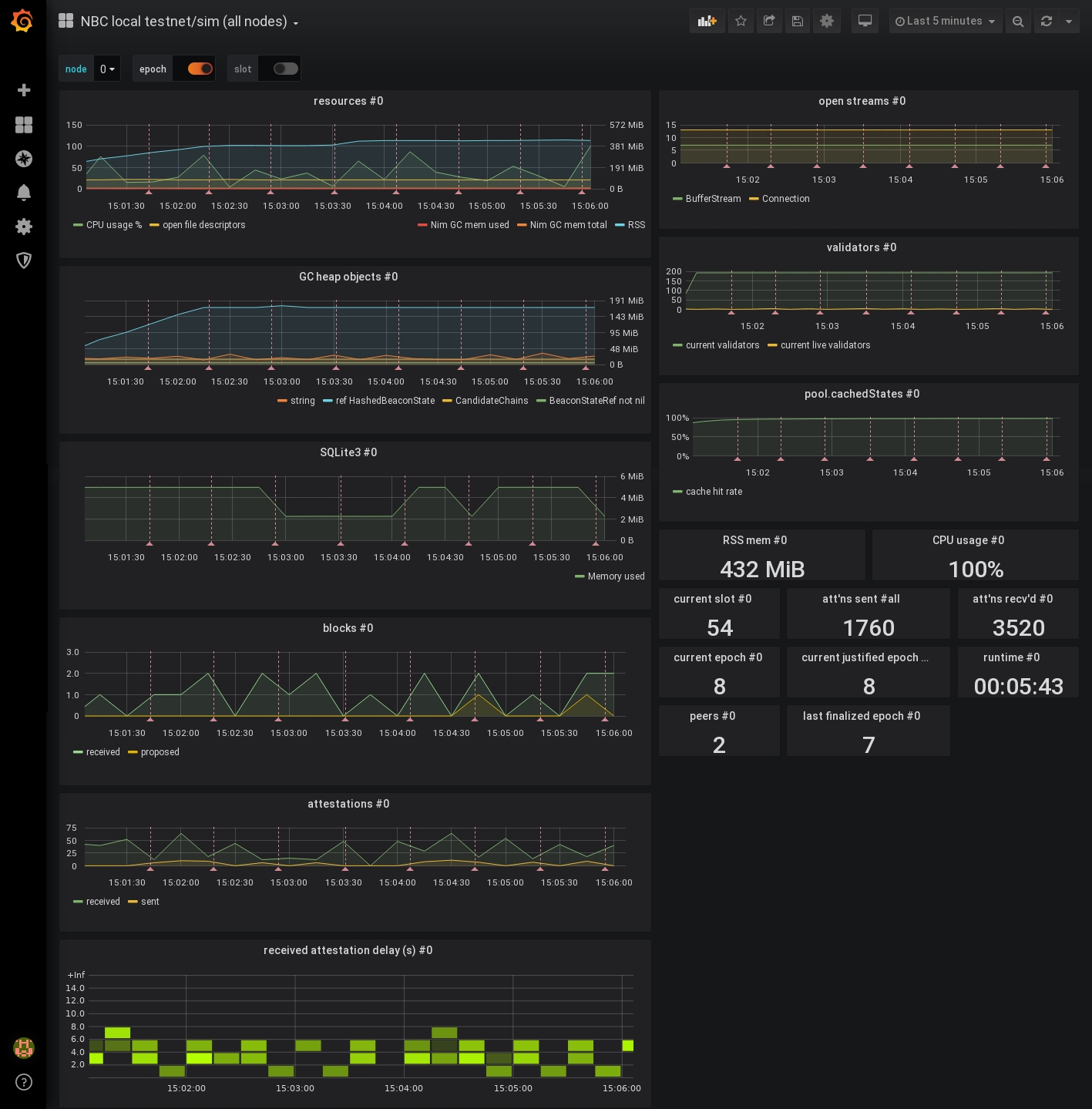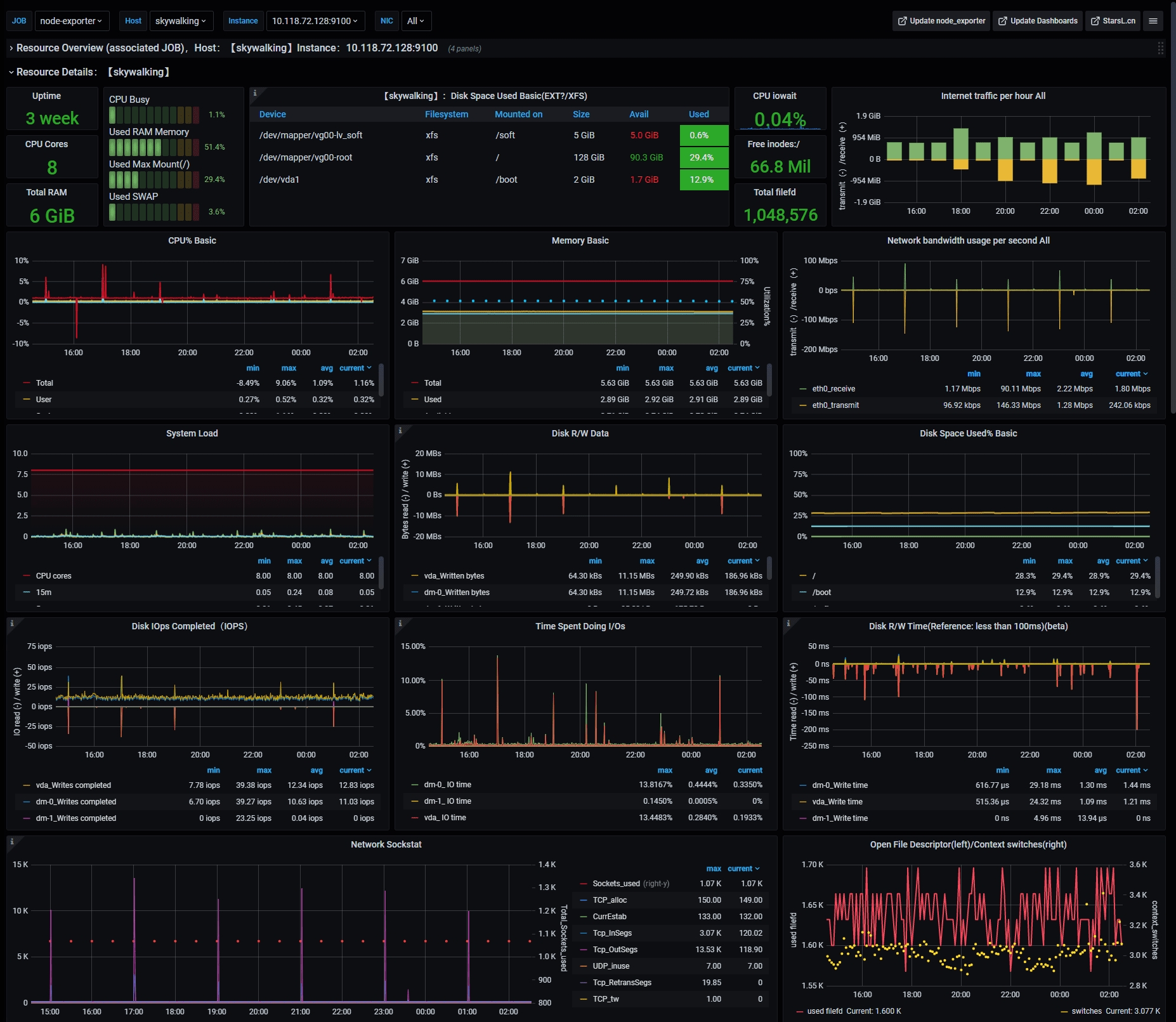Monitoring your validator with Grafana and Prometheus
Prometheus is a monitoring platform that collects metrics from monitored targets by scraping metrics HTTP endpoints on these targets.
Grafana is a dashboard used to visualize the collected data.
Official documentation is available here. 📖
1. Install Prometheus and Node Exporter
sudo apt-get install -y prometheus prometheus-node-exporter2. Install Grafana
sudo apt-get install -y apt-transport-https
sudo apt-get install -y software-properties-common wget
sudo wget -q -O /usr/share/keyrings/grafana.key https://apt.grafana.com/gpg.keyecho "deb [signed-by=/usr/share/keyrings/grafana.key] https://apt.grafana.com stable main" | sudo tee -a /etc/apt/sources.list.d/grafana.list
sudo apt-get update && sudo apt-get install -y grafana3. Enable services so they start automatically
sudo systemctl enable grafana-server prometheus prometheus-node-exporter4. Create the prometheus.yml config file
Remove the default prometheus.yml configuration file and edit a new one.
sudo rm /etc/prometheus/prometheus.yml
sudo nano /etc/prometheus/prometheus.ymlChoose the tab for your consensus client. Paste the following configuration into the file.
5. Setup prometheus for your execution client
Append the applicable job snippet for your execution client to the end of prometheus.yml.
Spacing matters. Ensure all job_name snippets are in alignment.
Here's an example of a Lighthouse-Nethermind config:
To exit and save, press Ctrl + X, then Y, then Enter.
Update file permissions.
Restart the services.
Verify that the services are running.
6. Create a SSH Tunnel to Grafana
Each time you want to access Grafana, create a SSH tunnel with port 3000 forwarded.
Example of how to create a SSH tunnel in Linux or MacOS:
Example of how to create a SSH tunnel in Windows with Putty:
Navigate to Connection > SSH > Tunnels > Enter Source Port 3000 > Enter Destination localhost:3000 > Click Add

Now save your configuration. Navigate to Session > Enter a session name > Save
Click Open to open a connection
Now you can access Grafana on your local machine by pointing a web browser to http://localhost:3000
7. Setup Grafana Dashboards
Login with admin / admin
Change password
Click the configuration gear icon, then Add data Source
Select Prometheus
Set Name to "Prometheus"
Set URL to http://localhost:9090
Click Save & Test
Download and save your consensus client's json file. More json dashboard options available below. [ Lighthouse | Teku | Nimbus | Prysm | Prysm > 10 Validators | Lodestar ]
Download and save your execution client's json file [ Geth | Besu | Nethermind | Erigon | Reth ]
Download and save a node-exporter dashboard for general system monitoring
Click Create + icon > Import
Add the consensus client dashboard via Upload JSON file
If needed, select Prometheus as Data Source.
Click the Import button.
Repeat steps 12-15 for the execution client dashboard.
Repeat steps 12-15 for the node-exporter dashboard.
🔥 Troubleshooting common Grafana issues
Symptom 1: Your dashboard is missing some data_._
Solution 1: Ensure that the execution or consensus client has enabled the appropriate metrics flag.
Geth: --http --metrics --pprof
Besu: --metrics-enabled=true
Nethermind: --Metrics.Enabled true
Erigon: --metrics
Reth: --metrics 127.0.0.1:9001
Lighthouse: --validator-monitor-auto
Nimbus: --metrics --metrics-port=8008
Teku: --metrics-enabled=true --metrics-port=8008
Lodestar: --metrics true
Symptom 2: Don't want to use SSH tunnels and you want to expose port 3000 to access Grafana, but understand the security concerns.
Solution 2: Open port 3000 in your ufw firewall. Access grafana at http://<node ipaddress>:3000
Example of Grafana Dashboards for each consensus client.


Beacon Chain JSON Download link: https://raw.githubusercontent.com/sigp/lighthouse-metrics/master/dashboards/Summary.json
Validator Client JSON download link: https://raw.githubusercontent.com/sigp/lighthouse-metrics/master/dashboards/ValidatorClient.json
Credits: https://github.com/sigp/lighthouse-metrics/

JSON Download link: https://raw.githubusercontent.com/Yoldark34/lighthouse-staking-dashboard/main/Yoldark_ETH_staking_dashboard.json
Credits: https://github.com/Yoldark34/lighthouse-staking-dashboard

Credits: https://github.com/status-im/nimbus-eth2/

JSON download link:


Credits: https://github.com/GuillaumeMiralles/prysm-grafana-dashboard

JSON download link: https://github.com/metanull-operator/eth2-grafana/raw/master/eth2-grafana-dashboard-single-source.json
Example of Grafana Dashboards for each execution client.

Credits: https://gist.github.com/karalabe/e7ca79abdec54755ceae09c08bd090cd
Blob enabled dashboard: https://github.com/ethereum/go-ethereum/files/14211070/Geth-Cancun-Prometheus.json

Credits: https://grafana.com/dashboards/10273
Example of Node-Exporter Dashboard
General system monitoring
Includes: CPU, memory, disk IO, network, temperature and other monitoring metrics。


Credits: starsliao
8. Setup Alert Notifications
Get notified of problems with your validators. Choose between email, telegram, discord or slack.



